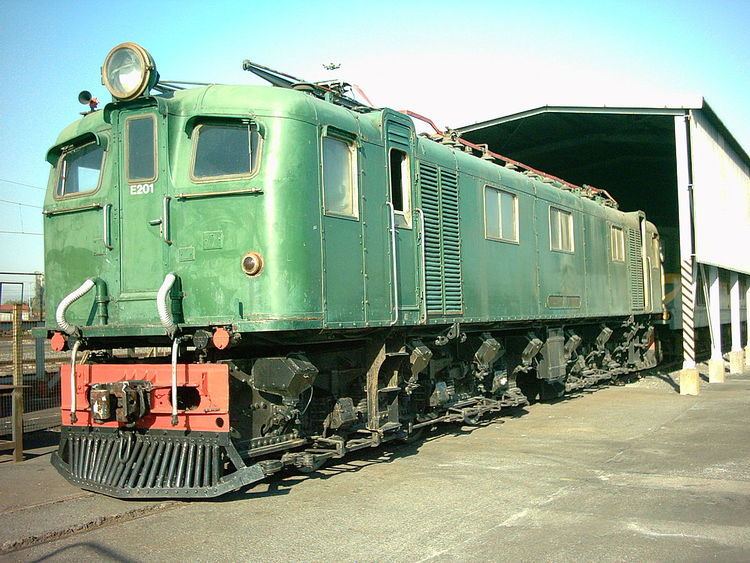Power type Electric Serial number RSH 7215-7242 Build date 1947 | Model Metrovick 3E | |
 | ||
Builder | ||
The South African Railways Class 3E of 1947 is an electric locomotive.
Contents
In 1947 and 1948, the South African Railways placed twenty-eight Class 3E electric locomotives with a Co+Co wheel arrangement in mainline service.
Manufacturer
The South African Railways (SAR) placed orders for the design and construction of the 3 kV DC Class 3E electric locomotive with Metropolitan-Vickers (Metrovick) in 1944. Although the locomotive was designed by Metrovick, who also supplied the electrical equipment, its construction was subcontracted to Robert Stephenson and Hawthorns (RSH). Twenty-eight locomotives were delivered and placed in service in 1947 and 1948, numbered in the range from E191 to E218.
Characteristics
These dual cab locomotives have three windows between the side doors on one side and four on the opposite side. When the locomotive is observed from the side with three windows, its no. 1 end will be to the viewer’s left.
Like the Classes 1E, 2E and 4E, the Class 3E has bogie mounted draft gear, therefore no train forces are transmitted to the locomotive body. It has a Co+Co wheel arrangement with an articulated inter-bogie linkage.
For the passenger role, provision was made for both electric and steam heating of passenger coaches, although the electric heating feature was never used on mainline passenger trains. The Class 3E had an integral steam boiler for train heating, unlike subsequent electric locomotive models like the Class 4E, Class 5E and Class 6E, which used separate steam wagons on passenger service.
Unlike Cape Town's and Durban's suburban trainsets, those working around Johannesburg had jumper connections on the roof above the end connecting doors. The Class 3Es were also equipped with these connections, immediately to the right of each headlight. During a shortage of suburban motor coaches c. 1948-1949, Class 3Es were used to haul suburban sets on the Witwatersrand and it is likely that the electric heating system was used during those winters. The picture alongside, a rare shot showing snow on the ground along the Johannesburg-Pretoria line on the Transvaal Highveld, the roof jumper connections between the suburban coaches and next to the unit's headlight are visible.
Service
The Class 3E was the first six-axle electric locomotive in SAR service and, with a maximum safe speed of 105 kilometres per hour (65 miles per hour), was designed for use where higher speeds were possible on track with less severe curvature than on the lower Natal mainline. It first entered service in Natal, but eventually served mainly on the Witwatersrand, in both freight and passenger working.
Preservation
No. E201, one of two known survivors of the Class, was staged under a shelter at the Bellville locomotive depot in Cape Town, along with a few other early SAR electric and diesel-electric locomotives which were earmarked for preservation. During 2015, most of these locomotives were relocated to Bloemfontein Loco.
Works numbers
The RSH works numbers of the Class 3E are shown in the table.
Illustration
The main picture and those following, offer views of all sides of the Class 3E locomotive.
